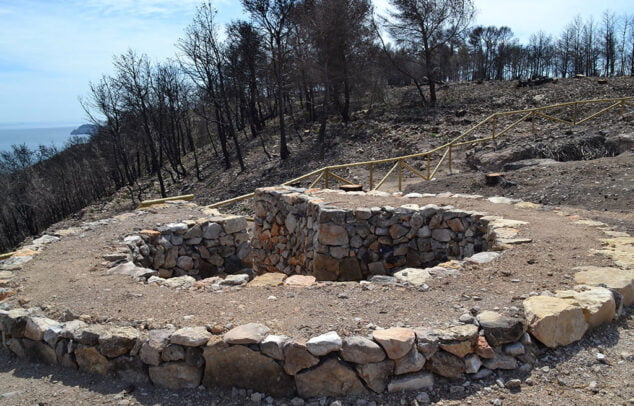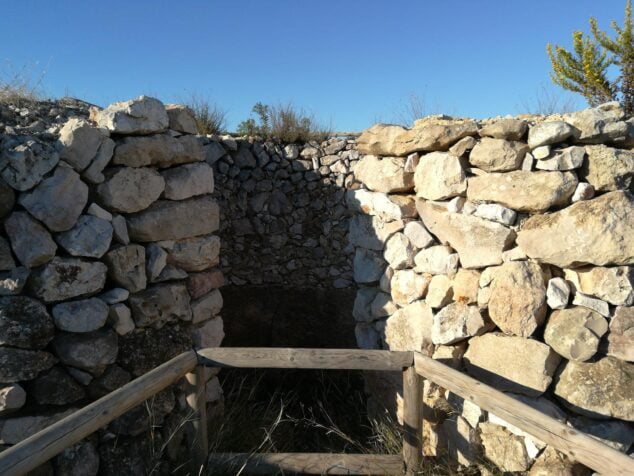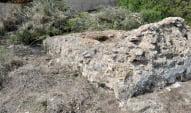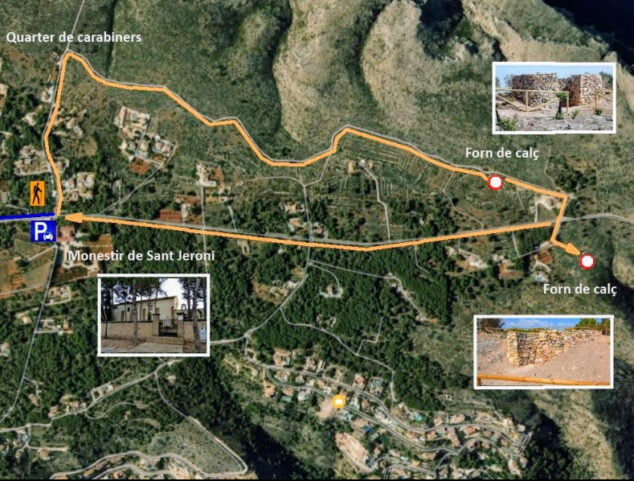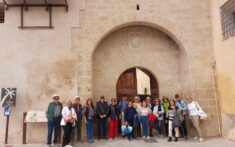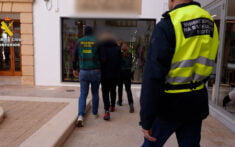To speak of lime kilns is to go back to the times of the Phoenicians, although in Xàbia there is evidence of them since Roman times. Its existence served to cook calcareous stone, which produced lime, which was later used as a construction material, mixed with earth or sand and water, or as paint, dissolving the lime in water.
In fact, lime has been, until a few years ago, an essential element for the construction of buildings. In addition, it was also used dissolved in water for liming and disinfecting, as well as for numerous artisanal, industrial, and domestic uses.
Next you have an index with all the points that we are going to deal with.
As they were?
The lime kilns were cylindrical in shape and were built by digging into the ground, defined, the visible part, by a robust stone wall with a long, narrow door. The lower part of the oven, used for storing and burning firewood, had a frustoconical shape, smaller at the base, while the upper part, larger, also shows a more conical shape at the top.
In general, the maximum height was about 3 meters, of which 1,50 meters correspond to the pot or combustion zone. The maximum diameter, approximately 2,50 meters, corresponds to the area of the step, which has a slightly inclined surface of about 20 cm. With this structure that made it more refractory and resistant to the intense temperature of the oven, since it burned between 800 and 1000 degrees for almost three days.
How did they work?
In the interior wall the stones were placed according to the size, creating an armament. At the base, surrounding the interior of the oven, the largest rocks were placed, forming what was called the concubine, while the smaller ones were located on the lap, in the areas with less heat. To cover the oven, a covering of earth was made called blind.
Also inside, once the stones were placed, it was filled with firewood, and more was added as it burned. That meant the calcine (worker) had to watch the oven night and day to maintain the fire, until the stone was converted, by the action of the fire, into quicklime.
When the process was ready, the kiln was allowed to cool for a few days and then the lime was distributed and sold.
How many are there in Xàbia?
Just over 50 years ago, according to texts from the Soler Blasco Museum, there were 54 ovens registered in the rustic cadastre of Xàbia:
- 22 in the Guard
- 13 at Cap Marti
- 10 in La Plana
- 4 in A granadella
- 2 in Lluca
- 2 in Ramblars
- 1 in Portitxol
However, at present, due to the expansion of urban planning and the transformation of terraces, there are only four lime kilns that can be visited thanks to the recovery work that was carried out a few years ago by the Town hall.
- 2 in La Plana.
- 2 in Granadella.
Where are they found?
The location of the ovens is centered on different parts of the municipality, far from the urban area, where there is sufficient firewood available and calcareous stone is found. Hence, they were found in various rural areas of Xàbia. Of the 54 existing ones, only four can be visited today.
in the flat
These two ovens were restored in 2015, coinciding with the recovery work of the Natural Park Montgó after the fire that occurred in 2014, with the intention of recovering the ethnographic and cultural heritage.
Both buildings have similar dimensions: an internal diameter of about 3,20 meters and a height (also from the inside) of 3 and 3,40 meters, respectively.
- Les Faroles Oven: so called because it is near the house of the family that was in charge of the lamppost of the lighthouse of the Cap de Sant Antoni
- La Plana Furnace
.
in La Granada
- Joan de Golaestreta oven: It was restored in 2004 thanks to a grant from the Department of Culture. It is located in the Granadella area, next to the road known as the first chain. It has larger dimensions than those of La Plana with an internal diameter of 4 meters and a height of 3,40 meters.
- La Granadella oven.
- Settlement of Punta de la Fontana: In this space, lime was used to create the durable coating of the hydraulic mortars with which the numerous quadrangular pools located in the deposit used for the elaboration of salts or other agricultural products were worn.
- Les Capcades Tower: In the Andalusian period, lime was used to make the hard mortar and stone block formwork for the walls of the Torre de les Capçades, a building with a rectangular floor plan measuring 3,84 x 5,60 meters and a wall thickness of 93/83 cm, which was built in the late XNUMXth or early XNUMXth century. It was also used in a mortar to settle the roof tiles of a small building attached to the tower, a construction that could date from the second half of the XNUMXth century.
- Large rectangular tank: the cistern of more than 15 meters in length, 4,25 meters in width and about 3 meters in height allowed to store about 20.000 liters of fresh water.
- Agricultural settlements and wall constructions, as the base mortar for the mosaic pavements, in the stuccoes painted in yellow, blue and other shades that would adorn the most important rooms of the town, as well as to cover (whitewash) capitals, bases and other Tosca architectural elements found in the deposit.
- Xàbia City Council Tourism Blog.
- Archeology and Ethnography Soler Blasco.
- Friends of the Xàbia Museum.
Traces of lime in Xàbia
As we mentioned at the beginning, in Xabia, the use of lime kilns is not documented until Roman times. From there it is observed that the lime was used in different buildings in the town:
Route of the Calciners
For lovers of hiking trails, the Via dels Calciners It is a good new leisure proposal to get to know the environment, the landscape and the humble and essential structures of our ancestors. During the autumn or even winter months they are the best for this excursion.







